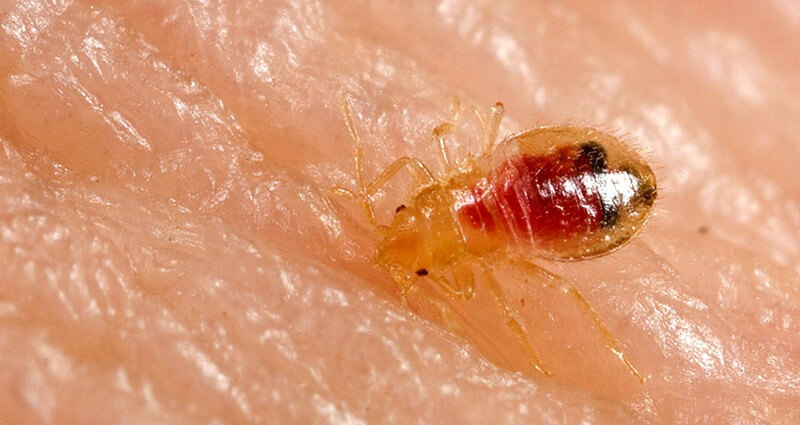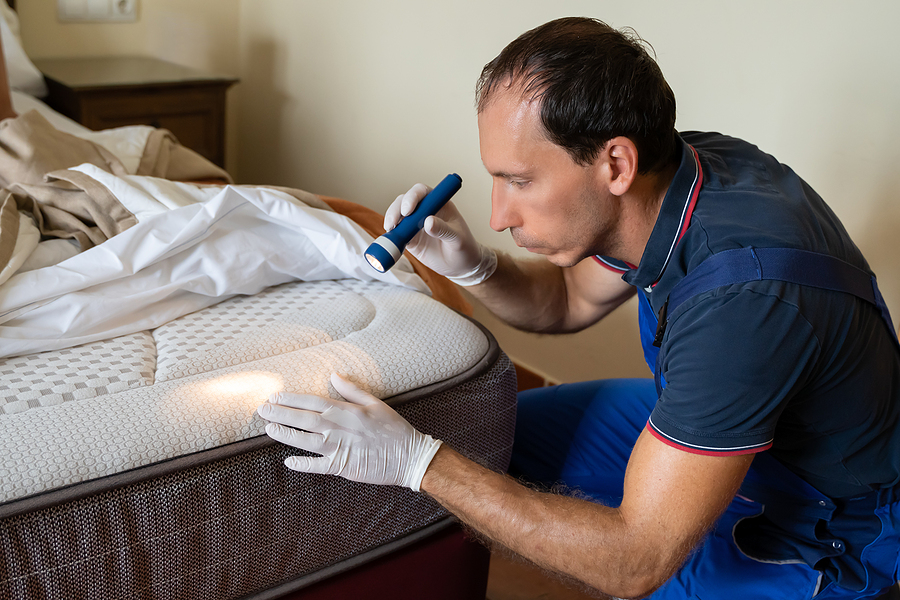Discovering the Science Behind Bed Pest Warm Treatments as a Sustainable Bug Monitoring Method
In the realm of bug management, the pursuit for efficient and lasting services continues to be a constant pursuit. One such technique that has actually acquired grip in recent times is making use of heat therapies to combat bed insect problems. By utilizing the scientific research behind thermal death factors for these relentless insects, warm treatments use a promising option to typical chemical-based methods. The details of how warm properly eliminates bed insects and the wider effects for sustainable insect management methods make this a subject worth exploring even more.
Bed Bug Heat Treatment Process

Thermal Fatality Point for Bed Pests
Subjecting bed bugs to raised temperatures beyond their thermal resistance variety is essential for attaining effective obliteration in warm therapy processes. The thermal fatality point for bed insects describes the temperature at which these parasites can not survive. Study indicates that bed insects begin to perish when subjected to temperature levels above 113 ° F(45 ° C) for a continual duration. As the temperature raises, so does the mortality rate of bed pests. At around 118 ° F(48 ° C ), bed bugs begin to pass away swiftly, with a mortality price of nearly 99% within minutes of exposure. This shows the sensitivity of bed insects to high temperature levels and highlights the efficiency of warmth therapies in eliminating invasions. By getting to and keeping temperatures above the thermal death factor for bed pests, pest administration specialists can guarantee detailed elimination of bed insect populaces, consisting of hard-to-reach locations where chemical treatments may be much less reliable. Understanding the thermal death point for bed insects is crucial for implementing effective heat treatment techniques and accomplishing lasting bug monitoring end results.
Advantages of Heat Treatments
Having actually developed the vital thermal death point for bed insects, it is crucial to now explore the substantial benefits that heat therapies use in effectively eradicating these resistant bugs. Heat therapies present several crucial advantages when compared to traditional chemical approaches. Among the main benefits is that warm can penetrate deep into fractures and crevices where bed insects conceal, guaranteeing that also the most hard-to-reach locations are heated up to lethal temperature levels. This comprehensive technique not only kills real-time bugs yet also targets bed insect eggs, preventing future problems.
In addition, warmth treatments are safe and eco pleasant, making them a lasting pest monitoring approach. Unlike chemical pesticides, warmth therapies do not leave hazardous deposits that can pose risks to human health or the environment. This facet is particularly important in sensitive atmospheres such as medical facilities, institutions, and domestic locations where chemical use may not be preferable.
Additionally, heat therapies have a high success price in getting rid of bed bug problems in a single therapy, minimizing the requirement for multiple sees and reducing disruption to occupants. This effectiveness not just conserves time and cash however additionally gives comfort to those managing bed pest troubles.
Effectiveness of Warmth Treatment

Warmth treatments have the added benefit of killing bed bug eggs, which are typically immune to conventional chemical therapies. Generally, the efficiency of warmth treatments in getting rid of bed pest invasions makes them a sustainable and reputable pest monitoring approach.
Sustainable Bug Management Benefits
Carrying out lasting parasite management methods offers lasting advantages for both the atmosphere and public health and wellness. By making use of approaches such as warmth therapies for bug control, we can reduce the dependence on unsafe chemical pesticides that can have adverse impacts on ecological communities and human wellness - exterminator. Lasting insect administration strategies aid in maintaining biodiversity by targeting certain parasites without harming non-target organisms, therefore maintaining a balanced ecological community
In addition, sustainable parasite management practices click this add to the total health and wellness and health of the public. By reducing exposure to hazardous chemicals utilized in typical insect control techniques, warmth treatments provide a more secure option for parasite administration in domestic, industrial, and public rooms. This decrease in chemical usage likewise helps in protecting against chemical residues from contaminating air, water, and dirt, safeguarding ecological top quality.
Conclusion
To conclude, bed pest warm treatments have been shown to be a efficient and sustainable pest monitoring approach. The thermal fatality point for bed bugs makes them prone to warmth treatments, which have numerous benefits over recommended you read typical chemical treatments. The performance of heat therapies in removing bed bug invasions while minimizing environmental influence highlights the potential of this technique as a lasting service for bug control.
The bed bug warmth therapy process includes raising the temperature within ravaged areas to a level that effectively gets rid of bed pests and their eggs. By getting to and keeping temperature levels above the thermal death factor for bed pests, insect management professionals can make sure thorough removal of bed bug populaces, including hard-to-reach areas where chemical treatments might be less effective. One of the primary benefits is that warm can pass through deep right into splits and holes where bed insects conceal, making sure that even the most hard-to-reach locations are heated to deadly temperatures. Unlike chemical therapies that might leave behind resistant populations, warm therapies offer a safe and eco friendly option that can permeate deep right into furnishings, wall surfaces, and other hard-to-reach areas where bed insects conceal.
The thermal death point for bed pests makes them prone to warmth therapies, which have various advantages over typical chemical therapies.
Comments on “Experienced DC Exterminator for Bed Bug Heat Treatment Near Me”